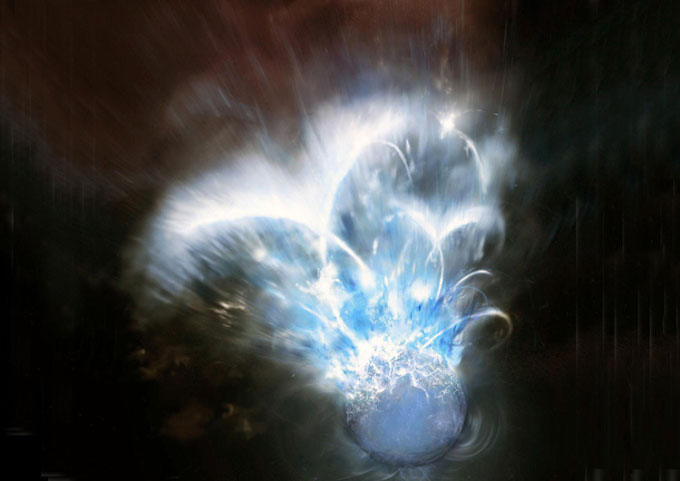Scientists have discovered a magnetar emitting intense energy bursts in the galaxy NGC 253, located 13 million light-years away.
According to a report published in the journal Nature last month, the gamma-ray burst named GRB 2001415 lasted only 1/10 of a second but released energy equivalent to one billion times that of the Sun. It originated from a strong magnetar in the galaxy NGC 253 in the constellation Sculptor.

Simulation of a powerful energy burst emitted from a magnetar. (Photo: University of Valencia)
This discovery is particularly remarkable as it was conducted entirely autonomously using artificial intelligence (AI) through a system developed by the Image Processing Laboratory (IPL) at the University of Valencia in Spain.
Magnetars are neutron stars with intense magnetic fields. Even in a dormant state, they can shine 100,000 times brighter than our Sun. In the case of the star that produced the GRB 2001415 explosion, it is indeed a “cosmic monster,” emphasized Professor Victor Reglero at the University of Valencia, the lead author of the study.
The cause of this intense explosion is still not fully understood, but Reglero speculates that it may stem from instability in the star’s magnetosphere, or due to a type of “earthquake” in its crust.
“Regardless of what triggered it, the event will generate Alfvén waves in the star’s magnetosphere,” said Alberto J. Castro-Tirado, a co-author of the study. Alfvén waves are a type of magnetohydrodynamic wave that also occurs in the Sun, interacting with one another to dissipate energy.
With a distance of 13 million light-years, GRB 2001415 is the farthest energy burst ever detected from a magnetar. This discovery could help scientists gain a better understanding of fast radio bursts – one of the most mysterious phenomena in the universe.


















































